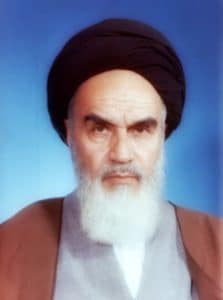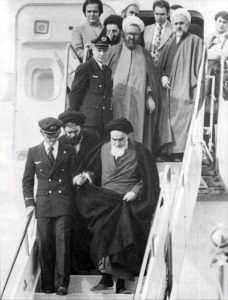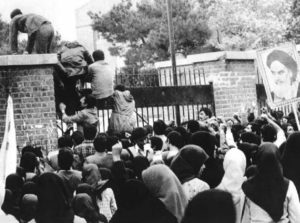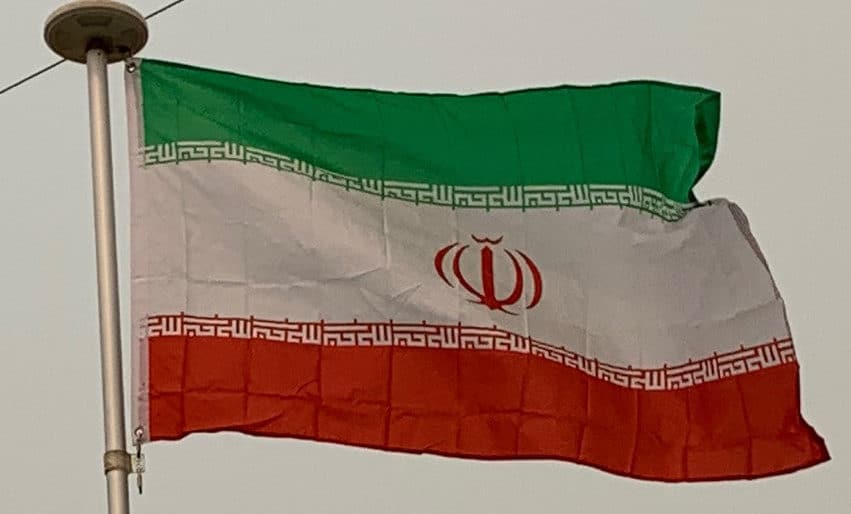
Ruhollah Khomeini, a radical Muslim cleric, became an active critic of the Shah’s far-reaching series of reforms known as the White Revolution. Khomeini publicly denounced the government, and was arrested and imprisoned for 18 months. After his release in 1964, he refused to apologize, and was eventually sent into exile.

Due to the 1973 spike in oil prices, the economy of Iran was flooded with foreign currency, which caused inflation. By 1974, the economy of Iran was experiencing double digit inflation, and despite the many large projects to modernize the country, corruption was rampant and caused large amounts of waste. By 1975 and 1976, an economic recession led to increased unemployment, especially among millions of youths who had migrated to the cities of Iran looking for construction jobs during the boom years of the early 1970s. By the late 1970s, many of these people opposed the Shah’s regime and began to organize and join the protests against it.
1979 Islamic Revolution to Present:
The 1979 Revolution, later known as the Islamic Revolution, began in January 1978 with the first major demonstrations against the Shah. After a year of strikes and demonstrations paralyzing the country and its economy, Mohammad Reza Pahlavi fled to the United States, and Ruhollah Khomeini returned from exile to Tehran in February 1979, forming a new government.

After holding a referendum, Iran officially became an Islamic republic in April 1979. A second referendum in December 1979 approved a theocratic constitution.
The immediate nationwide uprisings against the new government began with the 1979 Kurdish rebellion and the Khuzestan uprisings, along with the uprisings in Sistan and Baluchestan and other areas. Over the next several years, these uprisings were subdued in a violent manner by the new Islamic government. The new government began purging itself of the non-Islamist political opposition, as well as of those Islamists who were not considered radical enough. Although both nationalists and Marxists had initially joined with Islamists to overthrow the Shah, tens of thousands were executed by the new regime afterwards. Many former ministers and officials in the Shah’s government, including former prime minister Amir-Abbas Hoveyda, were executed following Khomeini’s order to purge the new government of any remaining officials still loyal to the exiled Shah.
On 4 November 1979, a group of Muslim students seized the United States Embassy and took the embassy with 52 personnel and citizens hostage, after the United States refused to extradite Mohammad Reza Pahlavi to Iran, where his execution was all but assured.

Attempts by the Jimmy Carter administration to negotiate for the release of the hostages, and a failed rescue attempt, helped force Carter out of office and brought Ronald Reagan to power. On Jimmy Carter’s final day in office, the last hostages were finally set free as a result of the Algiers Accords. Mohammad Reza Pahlavi left the United States for Egypt, where he died of complications from cancer only months later, on 27 July 1980.
